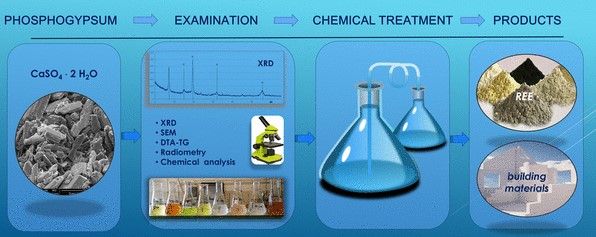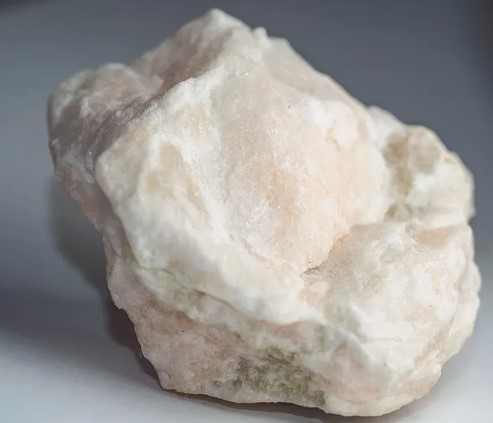Gypsum and phosphogypsum are two materials commonly encountered in construction and industrial processes, each possessing unique properties and applications. Gypsum, a naturally occurring mineral, is widely used for plaster, wallboard, and in cement, whereas phosphogypsum is a byproduct of the phosphate fertilizer industry, and its use is restricted due to environmental concerns.
Gypsum is composed primarily of calcium sulfate dihydrate and is valued for its ability to create smooth plaster and durable wallboard. Phosphogypsum, however, while chemically similar to gypsum, contains impurities such as acids and heavy metals, making it less desirable for common applications. The primary distinction lies in their environmental impact and usage restrictions, driven by the presence of naturally occurring radioactive materials in phosphogypsum.
Though both materials originate from calcium sulfate, their different sources, environmental impacts, and applications highlight the need for a careful approach when choosing materials for specific purposes. While gypsum is broadly utilized in various industries, phosphogypsum’s use is carefully regulated, primarily used in projects where its specific properties can be safely harnessed.

Gypsum Overview
Composition and Sources
Natural Occurrence
Gypsum is a mineral found in sedimentary rock formations across the globe. Its natural deposits are the result of ancient sea beds and volcanic vapors where it forms through the evaporation of sulfate-rich waters. The mineral is primarily composed of calcium sulfate dihydrate (CaSO4·2H2O), characterized by its softness and capability to be ground into a fine powder.
Industrial Sources
In addition to natural sources, gypsum can also be synthetically produced as a byproduct of various industrial processes. For instance, flue-gas desulfurization processes in power plants produce gypsum by removing sulfur dioxide from exhaust emissions, providing a sustainable method to manage waste products while producing a valuable commodity.
Uses in Industry
Construction Materials
Gypsum is fundamental to the construction industry, especially known for its role in producing plaster and drywall. The qualities that make it particularly valuable include:
- Fire resistance: Gypsum board is an excellent fire retardant because it contains water in its crystal structure which, under heat, is released as steam, slowing the spread of fire.
- Ease of installation: Lightweight and easy to cut, gypsum boards can be quickly installed in homes and commercial buildings.
- Sound insulation: Gypsum’s density helps to reduce the transmission of sound through walls and ceilings.
Agricultural Applications
Gypsum also plays a critical role in agriculture where it is used as a soil amendment. Some benefits in agricultural settings include:
- Soil conditioning: Gypsum improves the physical structure of heavy clay soils, helping reduce compaction and improving aeration.
- Nutrient supply: It provides plants with calcium and sulfur which are essential for growth.
- Salinity management: Gypsum helps to leach excess sodium from the soil, reducing harmful soil salinity.
Phosphogypsum Overview
Composition and Sources
Byproduct of Phosphate Processing
Phosphogypsum is generated as a byproduct during the production of phosphoric acid, used primarily to produce phosphate fertilizers. This process involves treating phosphate rock with sulfuric acid, resulting in gypsum-like material that contains various impurities including acids and heavy metals.
Chemical Characteristics
Phosphogypsum differs from natural gypsum due to its higher levels of contaminants such as fluorides, phosphates, and organic compounds. Additionally, it often contains trace amounts of radioactive elements such as radium, which are present in the original phosphate ores.
Environmental Concerns
Radioactivity Issues
The presence of radioactive materials in phosphogypsum has raised significant environmental and health concerns. The radioactivity primarily originates from radium isotopes which can lead to the production of radon gas, a significant health hazard.
Disposal Challenges
Due to its radioactive nature, the disposal of phosphogypsum is highly regulated. Common methods include stacking it in large “gypsum stacks” which must be carefully managed to prevent radon emission and water contamination. These stacks pose significant environmental risks, especially in areas prone to hurricanes and heavy rainfall, which can lead to acidic and radioactive water runoff.
Key Differences
Chemical Properties
Elemental Composition Comparison
While both gypsum and phosphogypsum contain calcium sulfate, their purity levels differ significantly. Natural gypsum is relatively pure, whereas phosphogypsum contains various impurities that affect its utility and safety.
Purity and Contaminants
The purity of gypsum makes it suitable for a wide range of applications, including food additives and medicinal uses, which are not advisable with phosphogypsum due to its contaminant content.
Environmental Impact
Radioactivity and Health Risks
Phosphogypsum’s radioactivity poses potential health risks, primarily through exposure to radon gas, which is a leading cause of lung cancer in non-smokers. The handling and disposal processes must therefore strictly adhere to health and safety regulations to mitigate these risks.
Regulations and Handling
The handling of phosphogypsum is governed by stringent regulations that dictate its storage, use, and disposal. In contrast, gypsum benefits from relatively lax regulations due to its safety and non-toxic nature, highlighting a significant difference in how these materials are treated.
Applications Contrast
Gypsum Applications
Common Uses in Building and Agriculture
Gypsum’s versatility makes it a staple in both the building industry and agriculture. In construction, it is primarily used for plasterboard, plaster, and as a setting retarder in cement. Each application takes advantage of gypsum’s non-toxicity and fire-resistant properties, making buildings safer and more durable. In agriculture, gypsum serves as a vital soil additive that improves soil structure, reduces soil compaction, and facilitates water penetration.
Benefits in Soil Treatment
Gypsum significantly enhances soil conditions, which directly benefits agricultural productivity. Key benefits include:
- Soil aeration improvement: Gypsum helps break up compacted soil, which increases its aeration and drainage capabilities.
- Reduction of soil erosion: By improving soil structure, gypsum helps reduce erosion from water and wind.
- Reclamation of sodic soils: It is effective in treating sodic soils by displacing sodium with calcium, a process that improves soil’s workability and crop yields.
Phosphogypsum Applications
Limited Use Scenarios
Due to its radioactive components, the use of phosphogypsum is restricted primarily to applications where human and environmental exposure is minimized. Currently, its use is approved in certain areas like road construction and land reclamation under stringent regulatory standards.
Potential in New Technologies
Research is ongoing into innovative ways to utilize phosphogypsum safely. Emerging applications being explored include its use in:
- Manufacture of Portland cement: where it can serve as a source of sulfate and calcium.
- Production of rare earth elements: Phosphogypsum contains low concentrations of rare earth elements, which are critical in modern technology.
Management and Disposal
Gypsum Disposal
Recycling and Reuse Practices
The recycling of gypsum is increasingly common, reflecting a growing emphasis on sustainable practices in construction and manufacturing. Used gypsum from demolished sites can be reprocessed into new drywall or used as a soil amendment in agriculture, showcasing its circular economy potential.
Safe Disposal Methods
When recycling is not an option, gypsum disposal must be managed to avoid environmental impact, particularly concerning groundwater contamination. Methods include:
- Landfilling in designated areas where leaching is controlled.
- Stabilization before disposal to reduce its solubility in water.
Phosphogypsum Disposal
Legal Restrictions
The disposal of phosphogypsum is governed by strict regulations due to its radioactive nature. In many countries, it is not allowed to be used in agriculture or any application that involves widespread distribution in the environment.
Innovative Disposal Techniques
To mitigate the environmental hazards associated with phosphogypsum stacks, innovative approaches are being developed, such as:
- Encapsulation: This involves sealing phosphogypsum in materials that prevent the leaching of radionuclides.
- Chemical stabilization: This method aims to convert soluble radionuclides into insoluble forms, reducing their mobility and potential environmental impact.
Future Prospects
Research Directions
Enhancing Usability of Phosphogypsum
Ongoing research focuses on making phosphogypsum safe for broader applications. This includes developing methods to remove or stabilize its radioactive components and exploring its viability in non-residential construction projects where exposure risks can be mitigated.
Environmental Safety Measures
Advancements in environmental safety measures are crucial for handling materials like phosphogypsum. Researchers are working on better containment methods and long-term monitoring technologies to ensure that stored materials do not become environmental hazards.
Technological Innovations
New Applications in Construction
Technological breakthroughs may enable the safe use of phosphogypsum in construction materials. For instance, its potential as a green building material is being explored, where its negative aspects are mitigated through technological interventions.
Advances in Recycling Technologies
The recycling of phosphogypsum into harmless and useful products could transform its current disposal issues into an opportunity for sustainable material science. Techniques such as phosphogypsum conversion into synthetic gypsum for use in plasterboard are under investigation.
Frequently Asked Questions
What is Gypsum?
Gypsum is a soft sulfate mineral composed of calcium sulfate dihydrate. It is extensively used in construction for making plaster, wallboard, and as an additive in cement due to its fire-resistant properties.
How is Phosphogypsum Different from Gypsum?
Phosphogypsum is a byproduct of the production of phosphate fertilizers, unlike gypsum, which is mined directly. It contains contaminants such as acids and radioactive materials, limiting its use compared to gypsum.
Can Phosphogypsum Be Used in Agriculture?
While gypsum is commonly used to improve soil structure and nutrient content, the use of phosphogypsum in agriculture is restricted in many countries due to its radioactivity and heavy metal content.
Why is Phosphogypsum Radioactive?
Phosphogypsum contains naturally occurring radionuclides such as radium, which are found in the phosphate ores from which it is derived. These radionuclides lead to increased levels of radioactivity in phosphogypsum.
Are There Safe Ways to Dispose of Phosphogypsum?
Safe disposal methods for phosphogypsum involve storing it in stacked piles that are managed to prevent leaching into the groundwater. Some countries are researching ways to recycle or safely use it in construction.
Conclusion
Understanding the differences between gypsum and phosphogypsum is crucial for their responsible use and management. Gypsum’s widespread applicability in construction and agriculture makes it a valuable resource, while phosphogypsum, with its environmental constraints, requires more cautious handling. The future may hold innovative methods for safely utilizing phosphogypsum, potentially transforming this byproduct into a useful resource.
As environmental regulations evolve and technology advances, the potential applications for both materials may expand, underscoring the importance of ongoing research and development in this area. By harnessing scientific advancements and implementing stringent environmental safeguards, both gypsum and phosphogypsum can be utilized in ways that maximize their benefits while minimizing their ecological impact.

